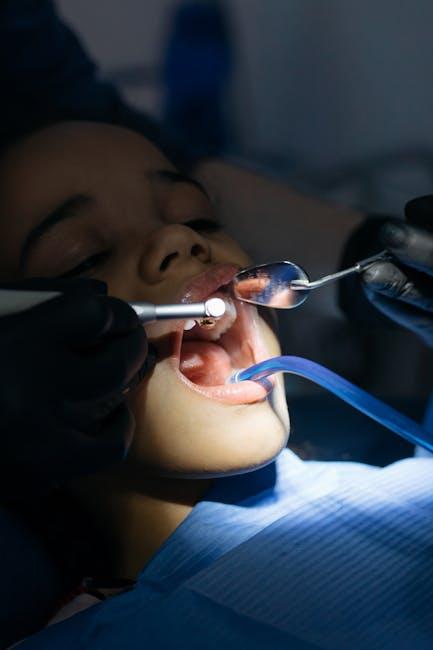1 in 3 Kids Has Dental Problems, Poll Finds – U.S. News & World Report
Recent findings revealed by a U.S. News & World Report poll have sent shockwaves among parents, educators, and healthcare providers alike: one in three children in the United States currently suffers from dental problems. This alarming statistic underscores the growing dental health crisis faced by American families and highlights the urgent need for enhanced pediatric oral care and education.
Understanding the Scope of the Problem
The poll, conducted on a representative sample of parents nationwide, found that around 33% of children aged between 3 and 17 have experienced one or more dental issues ranging from cavities and tooth decay to gum inflammation and enamel erosion. Despite advances in dental technology and public awareness, many kids still face significant challenges maintaining good oral hygiene.
Common Dental Problems in Children
- Dental cavities (tooth decay): The most prevalent issue caused by plaque buildup and poor oral hygiene.
- Gingivitis: Early-stage gum disease causing redness, swelling, and potential bleeding of gums.
- Tooth sensitivity: Often resulting from enamel wear or untreated cavities.
- Enamel erosion: Loss of the protective outer layer due to acidic foods or improper brushing.
- Malocclusion: Improper alignment of teeth, affecting bite and potentially requiring orthodontics.
Why Are So Many Kids Facing Dental Problems?
Several factors contribute to the high prevalence of dental problems among children, which can be broadly categorized into lifestyle, socioeconomic, and access-related issues:
Key Contributing Factors
- Poor diet choices: Consumption of sugary snacks, sodas, and processed foods promotes cavity formation and enamel damage.
- Irregular brushing and flossing habits: Lack of routine oral care leads to plaque buildup and gum disease.
- Limited access to dental care: Families without dental insurance or those in underserved areas face difficulty obtaining timely dental treatment.
- Lack of parental awareness: Parents may not fully understand the importance of early preventive dental care and regular check-ups.
- Fluoride deficiencies: Insufficient exposure to fluoride, whether via drinking water or toothpaste, reduces enamel strengthening.
Implications of Childhood Dental Issues
Dental problems in childhood have repercussions beyond oral health. Untreated dental issues can cause:
- Pain and discomfort: Affecting concentration in school and overall well-being.
- Speech development problems: Misaligned or missing teeth can hinder clear speech formation.
- Low self-esteem: Visible decay or missing teeth can impact social confidence and interactions.
- Higher long-term healthcare costs: Early dental problems often escalate into chronic conditions requiring costly treatments.
Benefits of Early Dental Care for Kids
Incorporating early preventive dental care can drastically improve outcomes for children’s oral health:
- Reduces risk of cavities and gum disease through regular cleaning and fluoride treatments.
- Ensures healthy tooth development and alignment with timely orthodontic interventions.
- Promotes good oral hygiene habits that last well into adulthood.
- Increases parental confidence in managing children’s dental needs with proper education.
Practical Tips to Prevent Dental Problems in Kids
Parents and caregivers can play a vital role in their children’s dental health by following these practical recommendations:
| Tip | Description |
|---|---|
| Establish a Daily Oral Routine | Brush teeth twice daily with fluoride toothpaste and floss once every day. |
| Limit Sugary Snacks & Drinks | Cut back on candies, sodas, and juices that promote tooth decay. |
| Schedule Regular Dental Visits | Make biannual dental checkups standard—even for very young children. |
| Use Fluoridated Water & Products | Ensure the child has access to fluoridated drinking water and toothpaste. |
| Lead by Example | Parents should model consistent oral hygiene practices and healthy eating. |
| Educate About Oral Health | Talk to children about the importance of their teeth and gums to encourage cooperation. |
Case Study: Sarah’s Journey to Better Oral Health
Sarah, a 7-year-old from Ohio, struggled with frequent cavities and discomfort due to inconsistent dental care. After her family incorporated a strict oral hygiene routine and limited sugary foods, paired with professional dental guidance, Sarah’s dental health vastly improved within a year. She now enjoys pain-free eating, boosted self-esteem, and routinely visits her dentist for preventive care.
First-Hand Experience: A Parent’s Perspective
John, father of two, shares, “We didn’t realize how important dental visits were for our kids until my youngest developed a cavity that needed treatment. Since then, we’ve committed to regular brushing, flossing, and dental check-ups. It’s made a huge difference in their smiles and overall health.” This resonates with many families who have turned awareness into action following poll revelations.
Conclusion: Prioritizing Children’s Dental Health is Crucial
The sobering statistic that 1 in 3 kids in the U.S. currently faces dental problems highlights an urgent public health challenge. Through awareness, education, and consistent preventive dental care, parents and communities can drastically improve children’s oral health outcomes. Early intervention not only protects a child’s smile but also lays the foundation for lasting overall wellness.
By fostering better habits, ensuring access to quality dental services, and embracing proactive dental hygiene, we can reverse this troubling trend and empower the next generation to enjoy healthier teeth and gums well into adulthood.


